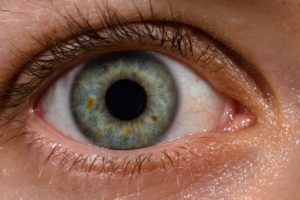 Finally, a discussion of the eye microbiome or microbiota (microbial community). Originally eyes were thought not to have much microbial life. But now with modern technology (such as genetic sequencing) it is known that many microbial species live on the eye. And yes, the eye or ocular microbiome can become imbalanced.
Finally, a discussion of the eye microbiome or microbiota (microbial community). Originally eyes were thought not to have much microbial life. But now with modern technology (such as genetic sequencing) it is known that many microbial species live on the eye. And yes, the eye or ocular microbiome can become imbalanced.
From The Scientist: Visualizing the Ocular Microbiome
Ophthalmologists have treated pathogenic eye infections for many decades, and the advent of contact lenses has made such infections more common. But little is known about the bacteria that live on the surface of a healthy human eye, and how this microbial make-up differs when a pathogenic strain takes over. Many bacteria known to live on the eye are difficult to culture, making them virtually invisible to researchers. Adapting sequencing technologies to study the ocular microbiome has opened up new avenues for understanding what’s really happening under the eyelids.
About five years ago, Valery Shestopalov of the Bascom Palmer Eye Institute at the University of Miami was speaking with his microbiology colleagues about what bacteria are found on normal, healthy eyes. Conventional wisdom at that time held that healthy eyes don’t harbor much microbial life, tears and blinking tend to clear away foreign objects, including bacteria. But Shestopalov’s early tests revealed something different. “The tests ran positive. All exposed mucosal epithelium are populated densely,” he said.
The team found that about a dozen bacteria genera dominated the eye’s conjunctiva, a third of which could not be classified. On the corneal surface, they found a slightly different community. Again, about a dozen genera dominated. And everywhere they’ve looked, the researchers have found more than just bacteria. “We haven't published on this yet, but I have been surprised by how often we find phage or viruses on the normal ocular surface,” Van Gelder told The Scientist in an e-mail.
“People can have a huge variation in microflora and still have healthy eyes, making our job difficult, but really amazing,” Shestopalov said.
The researchers also found that during keratitis infections—infections of the cornea—only about half as many bacterial varieties were present, most prominently Pseudomonas strains. The changes typically occurred well before a diagnosis of an eye infection, suggesting the ocular microbiome could inform future diagnostics, Shestopalov noted.
One factor that may be expected to impact the composition of the ocular flora is the use of contact lenses. Contact lens wear is one of the biggest factors leading to corneal infection... Researchers believe contact lenses make it easier for pathogens to colonize the surface of the eye by giving the bacteria something to adhere to. Sequencing biofilms from used contact lenses, Shestopalov’s team found evidence of microbial communities that were different from the ocular microbiomes of people who don’t use contacts. On the lenses themselves, the researchers have found much less diversity—many of the bacterial genera that dominate the conjunctiva and cornea were depleted. In their place, Staphylococcus dominated.
Whether the bacteria identified living on the surface of the eye are permanent residents or transient colonizers remains to be seen. The work of deconstructing the ocular microbiome is just getting started, but preliminary results have suggested it is distinct from the rest of the bacterial community that inhabits our bodies. “It stands apart,” Shestopalov said. “There’s statistical evidence of its difference from any other human microbiome.”
